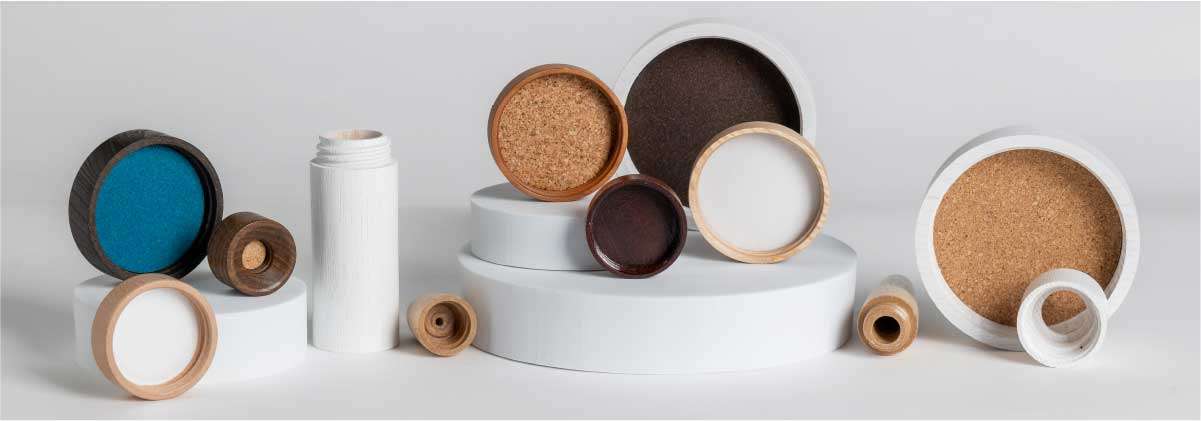 In a world increasingly concerned with environmental sustainability, the cosmetic industry is under the spotlight for its use of packaging materials. The industry, in fact, now faces the challenge of reinventing its packaging strategies to align with eco-friendly practices.
In a world increasingly concerned with environmental sustainability, the cosmetic industry is under the spotlight for its use of packaging materials. The industry, in fact, now faces the challenge of reinventing its packaging strategies to align with eco-friendly practices.
This article explores the realm of eco-friendly cosmetic packaging solutions, focusing particularly on the cosmetic industry's shift towards sustainability. We delve into why incorporating sustainable solutions is not just a trend but a necessity, and how wood emerges as a leading material in this green revolution.
Keep on reading to discover more!
The rise of eco-friendly cosmetic packaging
The cosmetic industry has long been associated with luxury and allure. However, this allure has a hidden cost: the environmental impact of packaging. Traditional custom cosmetic packaging, often made from plastics and non-recyclable materials, contributes significantly to environmental degradation. In response, there is a growing movement within the industry towards eco-friendly cosmetic packaging solutions. This shift is driven not just by regulatory pressures but also by a changing consumer ethos that values sustainability alongside beauty.
The importance of sustainable solutions in cosmetic packaging
Sustainability in packaging is no longer a choice but a necessity. Consumers are increasingly aware of the environmental impacts of their purchases, leading to a demand for products that align with their values. In the cosmetic industry, where packaging is integral to the product experience, this demand cannot be ignored.
Sustainable packaging not only reduces the ecological footprint but also resonates with the ethical considerations of the consumer base. It’s a powerful tool for brand differentiation and building customer loyalty in an increasingly competitive market.
Why wood is the ideal material for sustainable cosmetic packaging
Among the various materials vying for a place in eco-friendly cosmetic packaging, wood stands out as a particularly compelling choice. Wood, as a natural and renewable resource, boasts a significantly lower environmental impact compared to conventional packaging materials, most notably plastics.
Plastics, derived from non-renewable fossil fuels, are a major contributor to environmental pollution, often ending up in landfills or oceans where they take centuries to decompose. In contrast, when sourced responsibly, wood is biodegradable, compostable, and can be continually replenished. This makes it an exemplary model of a circular economy in action, addressing the urgent need to replace plastic in cosmetic packaging with more sustainable alternatives. The shift from plastic to wood is not only environmentally strategic but also resonates with the growing consumer demand for eco-conscious products.
The aesthetic appeal of wood is an added bonus, providing a touch of elegance and naturalness that elevates the overall appeal of cosmetic products. Unlike plastic, which often feels impersonal and utilitarian, wood conveys a sense of warmth and luxury. This can enhance the consumer's experience, associating the brand with quality and care for the environment.
.jpg?width=500&height=334&name=Th-legnavis-white+green-2(1).jpg)
Furthermore, wooden packaging solutions offer a unique combination of sustainability, functionality, and beauty. They can be crafted into a wide array of shapes and sizes, accommodating a diverse range of cosmetic products from lipsticks to lotion bottles. The versatility of wood allows for innovative designs that can set a brand apart in a crowded market, while still adhering to eco-friendly principles. This transition from plastic to wooden packaging not only reflects a brand’s commitment to sustainability but also offers a competitive edge in an industry that values both aesthetics and environmental responsibility.
Finding sustainable manufacturers for wooden eco-friendly cosmetic packaging
Transitioning to wooden eco-friendly cosmetic packaging requires partnering with the right manufacturers who not only understand the nuances of sustainable production but also align with the ethical standards of the cosmetic industry. Here are some key considerations when looking for a sustainable manufacturer:
Certifications and standards: look for manufacturers with recognized certifications such as the Forest Stewardship Council (FSC) or Programme for the Endorsement of Forest Certification (PEFC). These certifications ensure that the wood used comes from responsibly managed forests.
- Manufacturing processes: evaluate the manufacturing processes for their environmental impact. Manufacturers committed to sustainability will often use renewable energy sources and strive to minimize waste and emissions during production.
- Supply chain transparency: a transparent supply chain is crucial. Manufacturers should be able to provide clear information about the origin of their materials and the ethical practices involved in their procurement.
- Innovation and expertise: choose manufacturers who are innovators in their field, constantly seeking ways to improve both the sustainability and quality of their products.
- Collaborative approach: a good manufacturer should work closely with you to understand your specific needs and tailor their products accordingly. This collaborative approach ensures that the final packaging aligns with your brand’s identity and values.
The cosmetic industry is at a pivotal juncture where the choice of packaging material has far-reaching implications. By embracing wooden eco-friendly cosmetic packaging solutions, the industry can take a significant step towards environmental responsibility while meeting consumer expectations.
Since 1937, the Minelli Group has designed and developed top-quality sustainable cosmetic packaging whose quality is recognized all over the world.
If you need more information or have a project in mind, do not hesitate to contact us!








